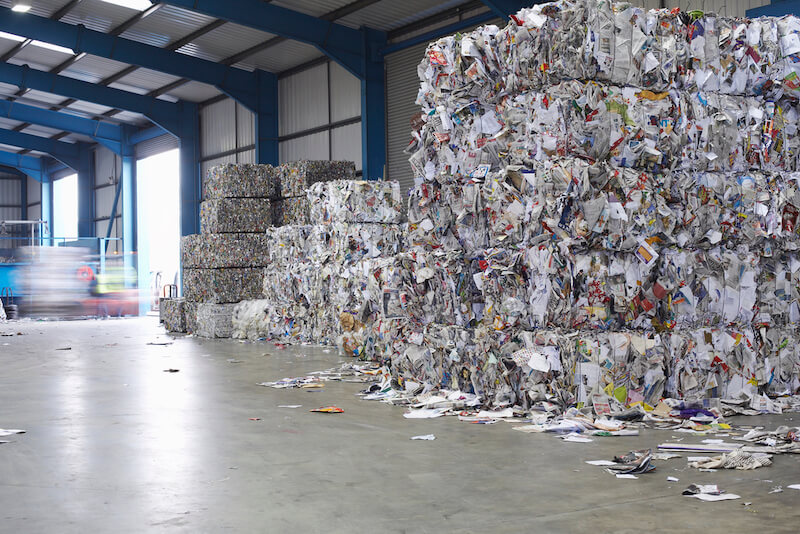We live, and have always lived, in a linear economy that produces immense amounts of CO2 and solid waste. This unsustainable model jeopardizes the ability of future generations to access the resources necessary for high-quality living.
But we have an opportunity to reimagine waste as a valuable resource to create a sustainable world for the first time in human history.
When most people think of waste, plastics immediately come to mind, and for good reason — they pollute our oceans and land by the millions of tonnes. But waste extends far beyond plastics.
Other solid waste materials, such as mine tailings, chemicals, and textiles, are abundant. Industrial processes often waste effluent, emissions and heat. Ashes and slags, which have been among the largest human wastes since the industrial age, amount to billions of tonnes sitting in landfills or tailings across the world. This problem continues to worsen as we industrialize the global south. Instead of discarding this waste, it could be repurposed, transforming our approach to waste management.
Despite its convenience, this approach presents challenges. It requires a shift in how businesses view waste and resources, moving from a linear to a circular economic model. This transition demands openness, collaboration, and innovation.
Governments and industries can facilitate this shift by creating supportive policies, such as subsidies for circular economy practices and platforms for resource sharing.
Businesses can collaborate to optimize resource use, transforming waste into valuable inputs. This approach goes beyond recycling to reimagine resource flows across industries. For example, waste heat from one facility can warm another, carbon emissions can be used to produce essential chemicals, and fly ash from power plants can be utilized in cement production. This inter-sector cooperation and collaboration can be the nexus of innovative resource use.
There is often debate on whether natural or engineered solutions are necessary to get us toward sustainability and address the climate crisis. The answer, unequivocally, is that we need both. In fact, many natural and engineered solutions are not as different from each other as they may seem.
Biomimicry — the term used for engineered solutions that draw inspiration from nature — offers a path forward. While nature alone might not suffice to address all of the waste we’ve generated, engineered solutions that mimic and speed up organic or inorganic natural processes can play a crucial role.
For instance, mineralization — a natural process that converts carbon dioxide into mineral carbonates over hundreds of years — can be replicated by technology companies in minutes. This process mimics what we see in nature to reduce atmospheric carbon emissions.
Biomimicry can also inform systemic, interactive approaches like industrial symbiosis, where waste from one production process becomes raw material for another. This mirrors symbiotic relationships in nature, where organisms mutually benefit from each other’s by-products. This concept is central to the circular economy, which seeks to minimize waste by reusing and recycling resources.
The benefits of industrial symbiosis are profound.
Economically, companies reduce costs by using waste materials as feedstock instead of new raw materials. Environmentally, this model significantly reduces waste, energy use, and greenhouse gas emissions. By keeping materials in use longer, industrial symbiosis helps minimize the ecological footprint of manufacturing.
Industrial symbiosis is often concentrated within industrial parks, ensuring that resource efficiency and waste reduction can be achieved across diverse sectors.
Examples in Canada include the Alberta Carbon Conversion Technology Centre in Calgary, where captured CO2 emissions are transformed into valuable products like building materials and chemicals. In Ontario, the Hamilton Industrial Environmental Association fosters collaboration among local industries to share resources and reduce waste, including the use of waste heat and by-products.
While these initiatives demonstrate the potential of industrial symbiosis to transform waste into valuable resources, Canadian industrial parks are moving relatively slowly towards sustainability.
Good government policies and incentives could help nudge industries toward sustainable solutions.
Integrating industrial symbiosis into mainstream business practices is essential for a sustainable future. Business leaders who are creative with their feedstock sourcing can reap significant economic and environmental benefits. By combining corporate leadership with supportive legislation and technological innovation, we can drive the shift toward a circular economy.
By 2050, when net-zero becomes a reality, we will need to have shaped our world where biomimicry and industrial symbiosis are at the heart of the economy, ensuring that resources are used wisely and sustainably, paving the way for a brighter, more resilient planet.
Photo courtesy of DepositPhotos




